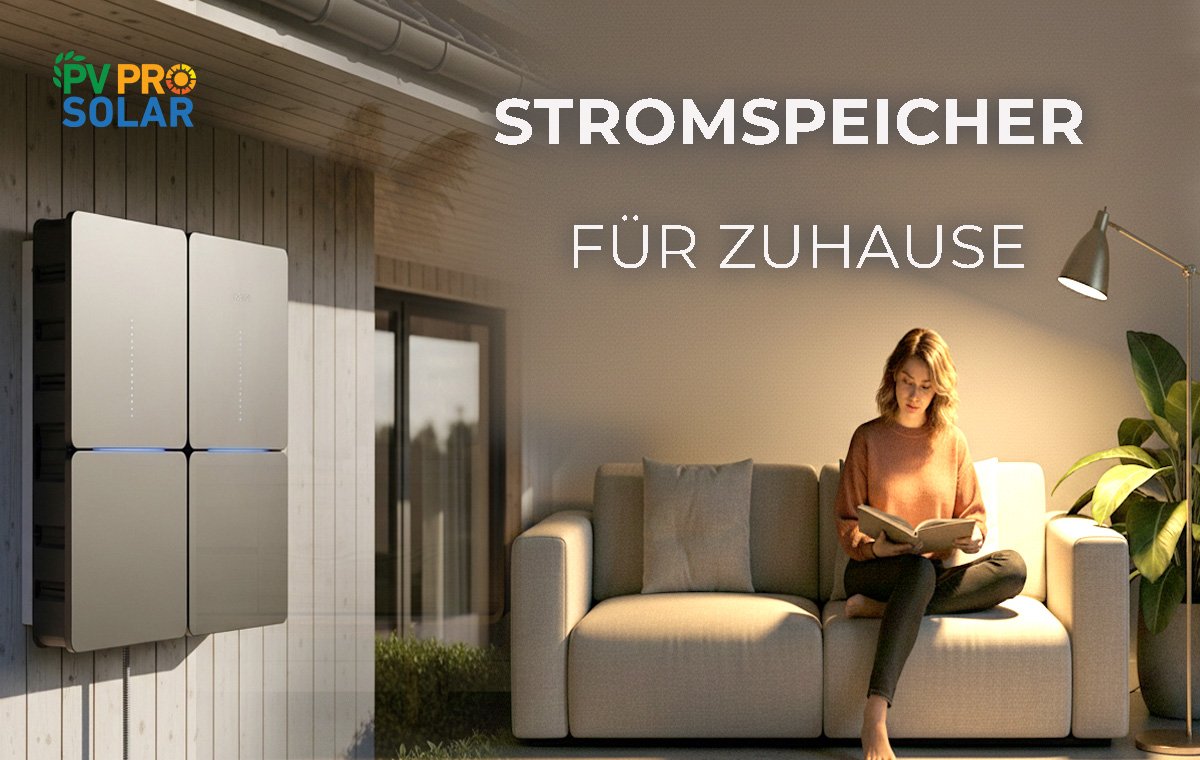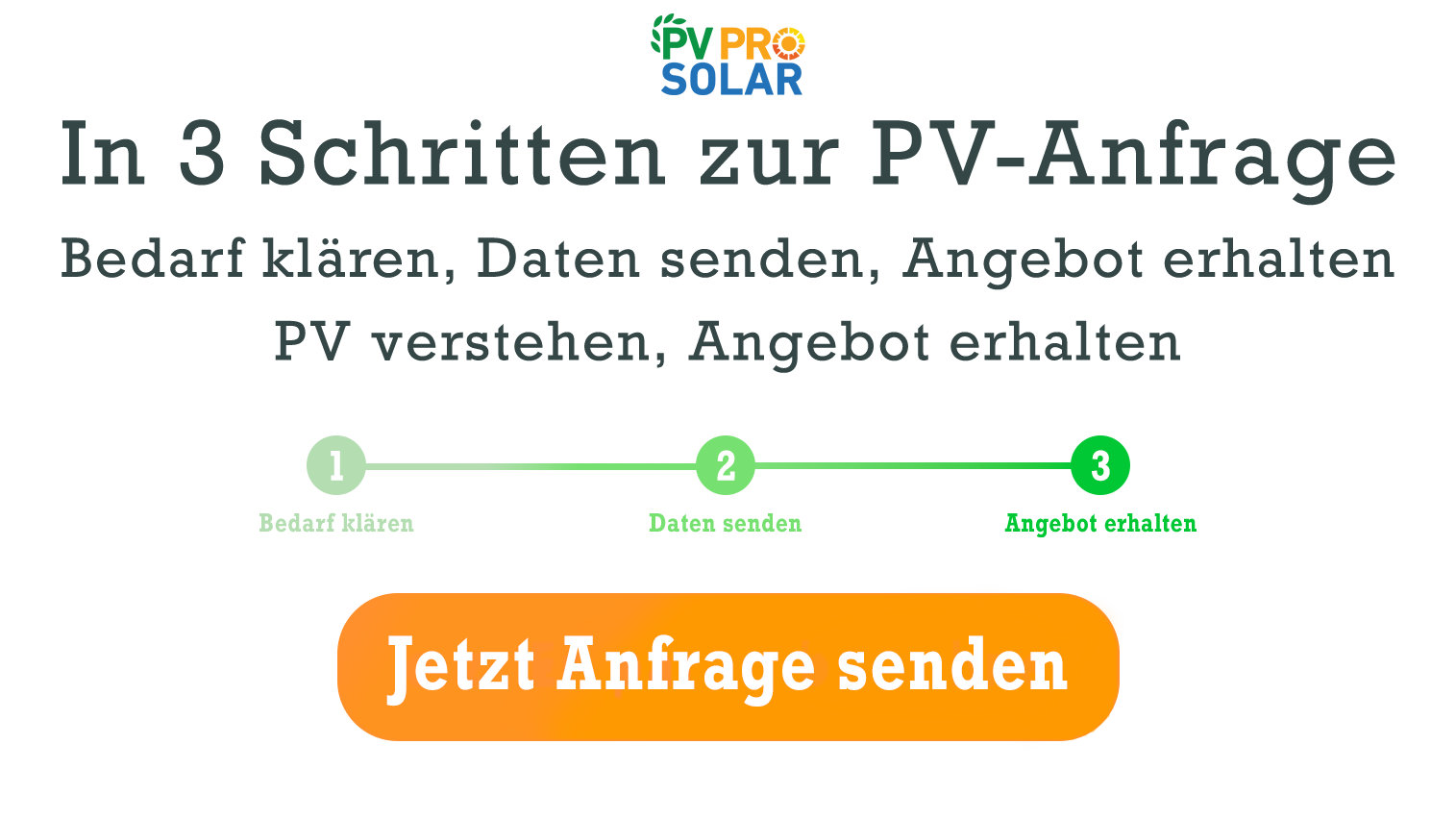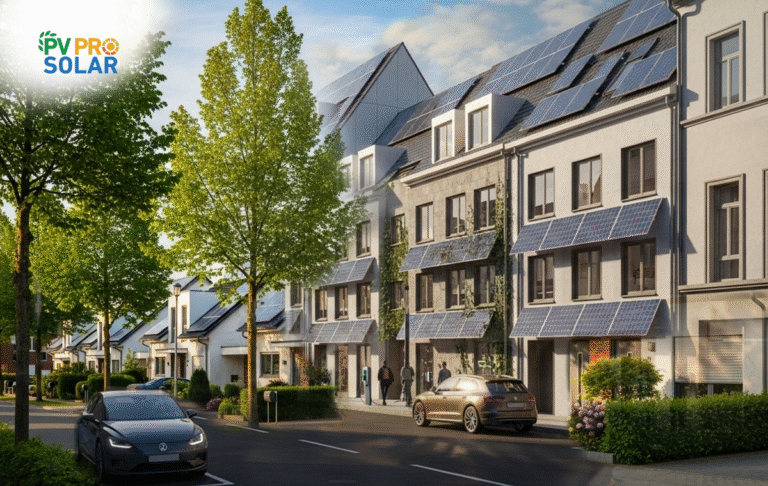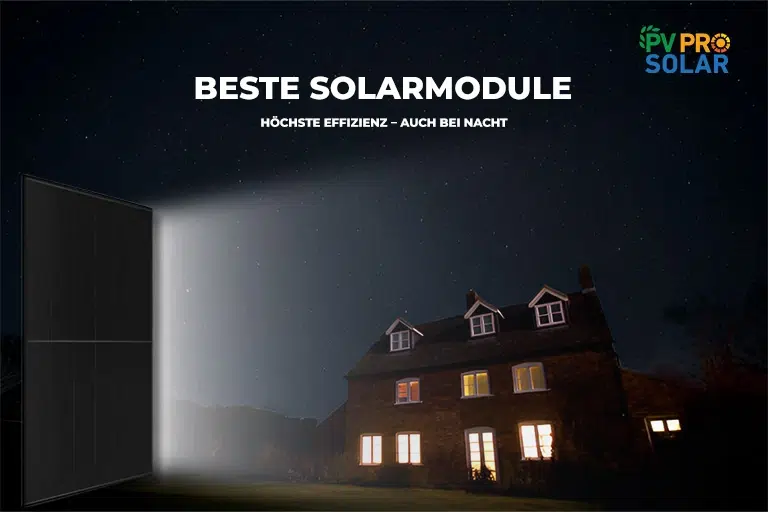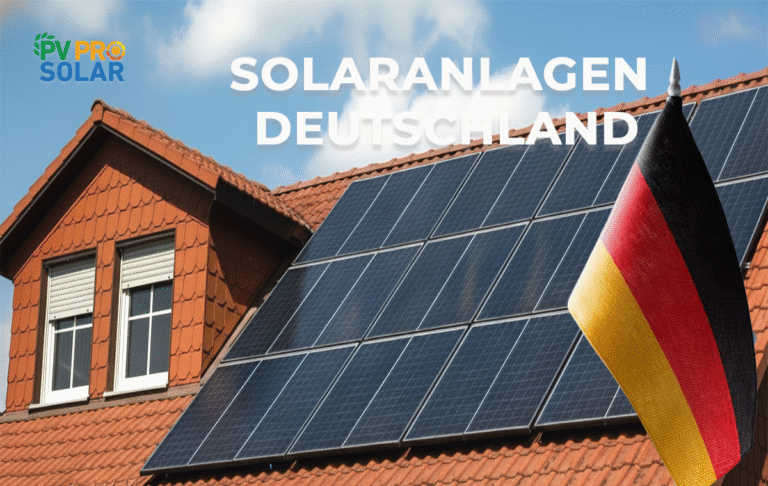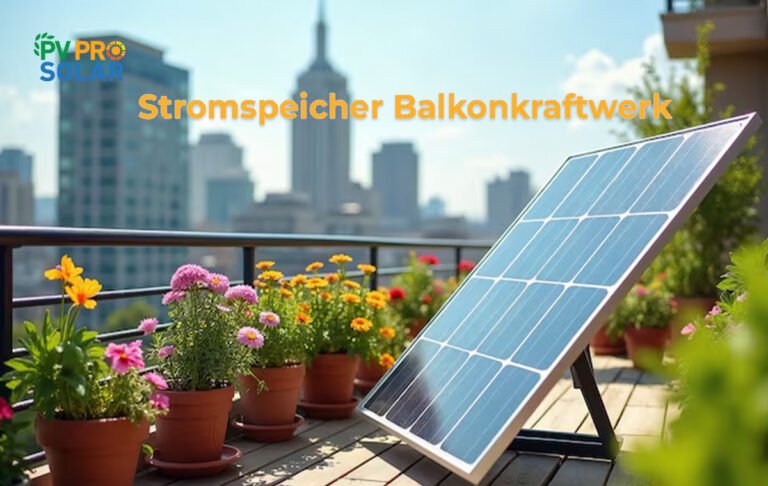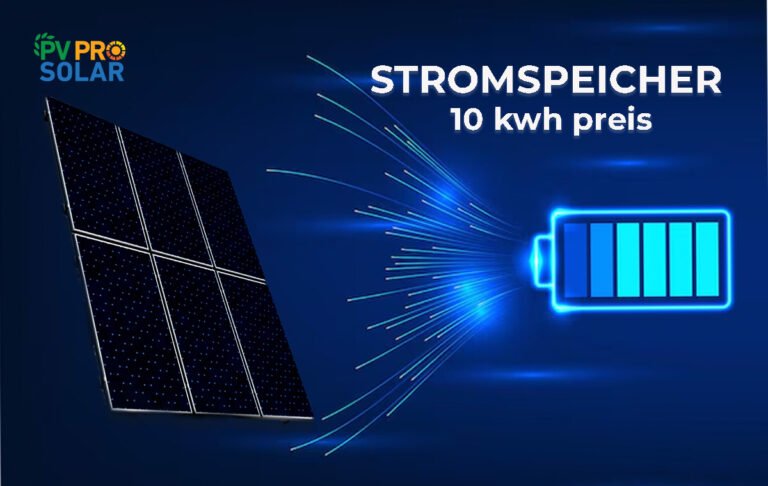Power Storage for Home – How to Truly Boost Your Energy Independence?
Power storage for home is no longer just a trend – it’s the key to real energy autonomy. More and more homeowners are recognizing the value of storing their self-generated solar energy instead of feeding it back into the grid. But when is a storage system actually worth it? What types are available, and what should you consider when choosing one?
This comprehensive guide covers everything you need to know about available technologies, costs, top-rated systems, alternatives, and practical tips to help you find the ideal power storage solution for your home.
What Is Home Power Storage and How Does It Work?
A home power storage system stores excess solar energy generated by your PV photovoltaic system during the day and makes it available when the sun isn’t shining – such as in the evening or at night. This significantly increases your self-consumption and reduces your dependence on the public power grid.
The process works in three simple steps:
- Generation – Your PV system produces electricity from sunlight.
- Storage – Excess electricity that isn’t used immediately is stored in the battery.
- Usage – When electricity is needed, the battery discharges and supplies your home with stored energy.
Modern kilowatt-hour (kWh) batteries typically use lithium-ion or lithium iron phosphate cells to ensure high efficiency and a long service life. Most systems also feature intelligent energy management systems that optimize charging cycles and minimize electricity costs.
What Are the Benefits of Power Storage for the Home?
Power storage for the home brings several economic, environmental, and technical benefits.
Greater Independence from the Grid
The higher your self-consumption, the less energy you need to purchase. A battery system can boost your self-consumption rate from about 30% up to 80%.
Backup Power During Outages
Home battery systems with emergency power functionality can keep essential appliances like refrigerators, routers, and heating pumps running even during power outages. These systems are especially valuable in areas with grid fluctuations.
Long-Term Cost Savings
Although power storage for the home may seem expensive upfront, many systems pay for themselves within a few years – especially with rising electricity prices and government incentives.
Sustainable Contribution to the Energy Transition
With a home battery, you help ease the load on public grids and support the use of renewable energy.
Different Types of Home Power Storage Systems
Not all home power storage systems are the same. Various technologies differ in price, performance, and applications:
Lithium-Ion Batteries (Standard)
- High energy density, lightweight
- Long lifespan (up to 10,000 charge cycles)
- Ideal for residential use
Lead-Acid or Lead-Gel Batteries (Traditional)
- Lower upfront cost
- Less efficient and shorter lifespan
- Suitable for smaller or temporary setups
Hybrid Systems
- Combine the battery and inverter
- Especially efficient for new PV installations
- Enable smart energy management
EV Battery Repurposing
A growing trend involves reusing EV batteries as stationary storage. These large power storage units for home are sustainable and resource-efficient, but their installation is complex and should only be handled by professionals like PVPro Solar.
Best-Rated Systems & Quality Criteria – What to Look For?
When searching for the best power storage for home, pay attention to the following features:
- Capacity (kWh) – Depending on household size, systems between 5–15 kWh are typical.
- Cycle Durability – Indicates how many times the battery can charge and discharge before degrading.
- Efficiency – Systems above 90% are considered highly efficient.
- Compatibility – Must be compatible with your existing PV system and inverter.
- Safety Certifications – Look for TÜV or VDE approvals.
Top-performing brands like BYD, Sonnen, LG Energy Solution, and Solplanet regularly rank among the leaders in battery storage systems, offering high efficiency, smart controls, and optional backup power features.
Costs and Financial Viability of Home Power Storage
Power storage for home costs vary based on several factors: storage capacity, battery type, installation method, and additional features.
Price range overview:
- Smaller systems (5 kWh): more affordable, ideal for minimal consumption
- Larger systems (10–15 kWh): sufficient for complete energy coverage of single-family homes
Key factors for assessing value:
- Energy independence level – How much of your total electricity usage can be covered?
- Lifespan – High-quality lithium batteries last up to 20 years.
- Subsidies – Government programs (e.g., KfW 442) or regional grants can significantly lower investment costs.
Many providers, including PVPro Solar, offer complete packages with installation, maintenance, and application support.
Can You Build a Power Storage System Yourself?
Some tech-savvy DIYers wonder if they can build their own power storage for the home. In theory – yes. In practice, it’s not advisable.
Why not?
- Safety risks: Lithium cells are sensitive to overcharging and heat.
- No certifications: Uncertified systems cannot legally connect to the grid.
- No subsidies or warranties: DIY systems don’t qualify for financial support.
That said, DIY systems using second-life EV batteries can be used in off-grid setups, such as garden sheds or remote cabins – but not in grid-connected home systems.
For reliable and safe operation, experts recommend certified systems from established manufacturers.
Large-Capacity Power Storage – Who Benefits Most?
A large power storage system for the home is especially worthwhile for households with high energy consumption, such as:
- Families using heat pumps and EVs
- Smart homes with automated control systems
- Small businesses optimizing for self-consumption
These systems offer capacities from 15 kWh to 50 kWh and are often modular for future expansion. They’re also well-suited for backup power during outages.
Depending on the system, you can choose between a partial (only key circuits stay active) or a full backup power supply for your entire home. PVPro Solar offers customized planning and integration into existing PV systems.
How to Choose the Right Power Storage for Home?
Choosing the right system depends on your individual needs. Ask yourself:
- What’s your daily electricity usage? → A 10 kWh battery typically covers 70–90% of a four-person household.
- How much solar capacity do you have? → Rule of thumb: Storage size ≈ 60–70% of your daily PV production.
- Do you need backup power? → Look for systems with islanding capability and automatic switchover.
- Are you planning to expand later? → Opt for modular and scalable systems.
Pro tip: Get expert advice – PVPro Solar analyzes your consumption, recommends suitable models, and calculates the ideal storage size for maximum efficiency.
Power Storage During Outages – How Safe Are Modern Systems?
A common reason for investing in power storage for home is safety during outages. A modern system can activate islanding mode, isolating your home from the public grid and supplying internal power.
There are two main options:
- Partial backup: Only critical circuits (e.g., heating, fridge, Wi-Fi) stay on.
- Full backup: Keeps the entire house running – requires hybrid inverters.
Modern systems react within milliseconds to grid disruptions, providing a seamless power supply even during extended blackouts.
Power Storage Test & Large Capacity Comparison
An objective power storage test compares technical specs, efficiency, and durability. Current top performers include:
| Manufacturer | Model | Capacity (kWh) | Efficiency | Special Features |
| BYD | Battery-Box Premium HVS | 10.2 | 96% | Modular expansion |
| Sonnen | eco 10 | 10 | 94% | Smart energy management |
| Solplanet | ASW 10T | 10 | 97% | Integrated hybrid inverter |
| LG Energy Solution | RESU10H | 9.8 | 95% | Compact and long-lasting |
In large-scale comparisons, it becomes clear: Capacity isn’t everything. Integration with your PV system, inverter type, and smart control software is equally critical. Systems with intelligent grid communication (Modbus/TCP, RS-485) offer substantial benefits.
Power Stations vs. Stationary Home Storage – An Underrated Alternative?
Many consumers think of portable power stations when discussing energy independence. But how do they compare to fixed power storage for home?
| Feature | Power Station | Stationary Power Storage |
| Mobility | Portable | Fixed installation |
| Capacity | 1–3 kWh | 5–15 kWh or more |
| Backup Power | Limited | Full backup capability |
| Lifespan | 2–5 years | Up to 20 years |
| Use Case | Camping, outdoor use | Residential with PV systems |
While power stations are useful for temporary needs or outdoor use, they can’t replace a full-fledged home power storage system in terms of capacity, integration, or longevity.
Common Mistakes When Choosing or Installing Power Storage
Avoid these frequent pitfalls:
- Incorrect sizing – Undersized batteries have limited benefit; oversized ones may not be cost-effective.
- Incompatibility – Ensure your battery and PV system can communicate.
- Neglected maintenance – Even low-maintenance systems should be checked regularly.
- Missed subsidies – Many incentives go unused due to late applications.
A professional installer like PVPro Solar GmbH handles everything – planning, installation, paperwork, and maintenance – all from one provider.
Trends & the Future of Home Battery Storage
The home power storage market is booming. Key trends include:
- Bidirectional charging (V2G) – EVs used as home and grid storage
- Second-life batteries – Reusing EV batteries in home systems
- Grid-supportive storage – Selling excess energy to utilities
- Artificial intelligence – Optimizing charging and discharging automatically
With upcoming legislation like the Solar Summit Act 2026 and EU community energy directives, integrating storage will become even easier – a clear win for homeowners.
Power storage for home is no longer a future concept – it’s a central part of modern energy strategies. It increases independence, reduces costs, and makes solar energy usable around the clock.
If you’re considering self-sufficiency, rely on certified systems, expert installation, and long-term support. PVPro Solar GmbH offers personalized planning, high-quality PV storage solutions, and full-service packages – from the initial quote to turnkey installation.
Visit PVPro Solar GmbH now and request your free, no-obligation quote – the smartest investment in your energy future.
Yes, especially if you already have a PV system and want to increase self-consumption. By storing solar energy, you reduce electricity costs and become less reliant on the grid.
Modern lithium-based batteries typically last 10 to 20 years, depending on usage, temperature, and charging cycles. Premium systems often exceed 8,000 cycles.
Yes, there are systems for backup or storing grid electricity, but their full potential is realized only when combined with a solar installation. Is power storage for home really worth it?
How long does a home battery last?
Can I use power storage without a PV system?
